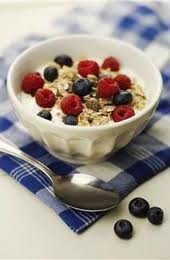Farmstead Made Yoghurt
 Much of the journey to becoming a homesteader is taking small steps, learning a few skills at a time rather than jumping in full force with both feet, which can be overwhelming or even disastrous. For apartment dwellers it may be potting herbs in a window box garden, turning farmer’s market fruits into jams and jellies or combining wheat and water to make bread. For those living on suburban lots these skills can be expanded to include a garden, rabbits or a small flock of chickens. Small deliberate steps make a homesteader built on a solid foundation, not the fast rush to try everything at once.
Much of the journey to becoming a homesteader is taking small steps, learning a few skills at a time rather than jumping in full force with both feet, which can be overwhelming or even disastrous. For apartment dwellers it may be potting herbs in a window box garden, turning farmer’s market fruits into jams and jellies or combining wheat and water to make bread. For those living on suburban lots these skills can be expanded to include a garden, rabbits or a small flock of chickens. Small deliberate steps make a homesteader built on a solid foundation, not the fast rush to try everything at once.
One small skill you can learn in a day is making farmstead yoghurt from scratch.
Yoghurt has been a staple food in most of the world since ancient times. Different countries use milk from different animals, from the common cows, sheep and goats to lesser know milk from water buffalos or camels.
I like making homemade yoghurt because it connects me with the farmer and animals that produce the milk. I don’t have to worry about where the milk is coming from or how the animals have been feed or if they have been given a steady diet of antibiotics or milk producing hormones. I know how they were raised because I know the farmer and the animals.
I don’t currently raise milking animals and I’m not sure it will ever be in my homesteading plans. But, with good friends who have dairy goats, and cows milk available through organic co-ops I don’t really need to raise my own.
Yoghurt is one of the simplest skills you can learn because doesn’t take a lot of effort and you don’t need a lot of fancy equipment. A standard glass canning jar, a pot and the cultures are really all you need. That coupled with a few hours of heat and you’ll be savoring your own tangy, spoonable, creamy delight.
Let’s get started…
As with any dairy making process the better the milk the better the outcome. Try to purchase quality organic milk from a local dairy producer. And, if that is not possible, use milk from an organic market that does not have any added ingredients, stabilizers or is ultra-pasteurized. You’ll also need an organic plain yoghurt with no stabilizers or fillers as a culture, just milk and cultures.
Oh, one thing before you start; homemade yoghurt is not like the thick sweet store bought stuff full of fillers and thickeners. It is softer and some think a little more pourable.
Here we go…
Step One: Heat ½ gallon of milk on the stove to 180 degrees F. Remove from heat and let cool to 120 degrees F.
Step Two: Spoon in 4 tablespoons of the plain yoghurt and whisk to fully incorporate.
Step Three: Pour milk into the size jar you want (I use pint jars), then place them together in a warm, draft-free place. The goal is to keep the yoghurt at 100 degrees F so the cultures can do their thing. Covering them with dish towels will help keep them warm. My goat milk supplier, Sandy, uses a heating pad set on low to help keep the right temperature. Leave them covered for several hours while the cultures work.
Step Four: After about 4 to 6 hours the yoghurt should be done and can be stored in the refrigerator when cooled.
Step Five: Now comes the fun part. When the yoghurt is ready to eat you can mix in cut fruit, smashed berries, granola, honey and spices or any other yummy combination you can think of. Experiment! It’ll be fun.
BUT, be sure to save a small bit of plain homemade yoghurt to be the started for your next batch. It won’t take long before making your own yoghurt will be a cooking staple.
If Greek yoghurt is more your style, as it is mine, simply place a few layers of cheesecloth in a colander and place the colander in a bowl. Let the yoghurt drain until you reach the consistency you like. If you continue to drain most of the liquid out you will have something that resembles cream cheese, which when salted can be used in many savory dishes.
What’s left in the bowl is the whey, a watery, white-ish liquid that can be used in making bread and baking, to thickening soups or even in blended drinks.
From this simple skill you can enhance the connection you have with your food, not to mention providing your family with a nutritious snack or meal. It may even give you the confidence to try simple farmstead cheeses as well.
Recent comments
Aenean nonummy hendrerit mauris. Phasellus porta.